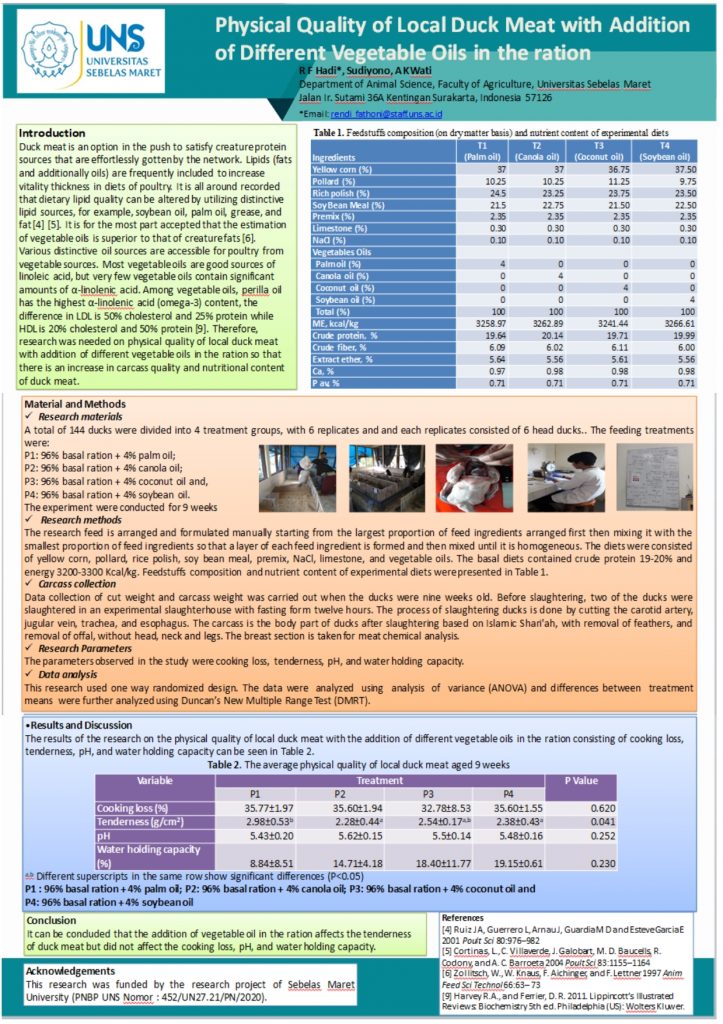Paper ID: 124
PHYSICAL QUALITY OF LOCAL DUCK MEAT WITH ADDITION OF DIFFERENT VEGETABLE OILS IN THE RATION
Authorship
Rendi Fathoni Hadi, Sudiyono and Ari Kusuma Wati*
Department of Animal Science, Faculty of Agriculture, Universitas Sebelas Maret, Surakarta, Indonesia
wati_arikusuma@staff.uns.ac.id
rendi_fathoni@staff.uns.ac.id; sudiyono@staff.uns.ac.id
Abstract
The increasing need for meat can be done by optimizing the utilization of the potential of local livestock resources, one of which is local duck. Ducks are waterfowl and duck meat can be used as a source of animal food. This study aimed to determine the physical quality of duck meat with the addition of vegetable oil in the ration. The research design used was Randomized Complete Design (CRD) in a unidirectional pattern with 4 treatments, each treatment consisting of 6 replications and each replication consisted of 6 ducks. The treatments in this study include; P1: (96% basal ration + 4% palm oil); P2: (96% basal ration + 4% canola oil); P3: (96% basal ration + 4% coconut oil) and P4: (96% basal ration + 4% soybean oil). The observed variables were physical quality of meat (cooking losses, tenderness, pH, water holding capacity). The data obtained were analyzed by variance analysis and the real difference test between treatments. The results showed that the use of vegetable oil was a significant effect (P <0.05) on the tenderness of duck meat but not significantly different (P>0.05) on cooking losses, pH, and water holding capacity. It can be concluded that the addition of vegetable oil in the ration affects the tenderness of duck meat but did not affect the cooking losses, pH, and water holding capacity.
